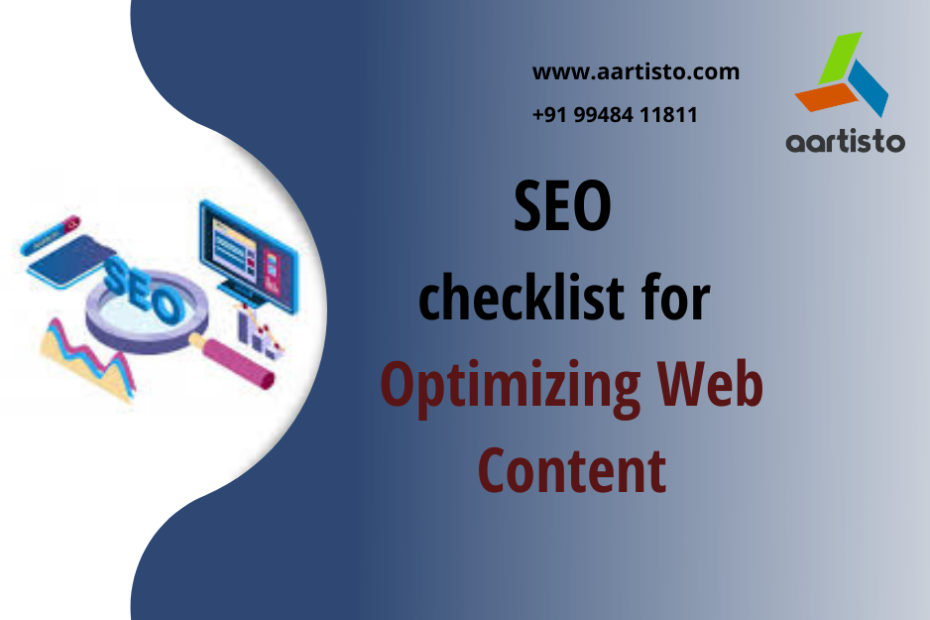Website SEO checklist
More than 5 million Google searches take place daily, meaning that search engine optimization (SEO checklist) – adjusting your website to increase the level of quality traffic – is an essential part of connecting with your audience.
Increases your ranking at the end of a search – lowers your rankings – if you know that designing and updating your site for SEO is easy.
Integrate SEO checklist
Learn about SEO below, and then use the checklist to integrate SEO into your digital marketing strategy.
Understand search engines
Google and other search engines use formulas called algorithms to determine which sites should be served in response to a search. As search engines constantly update their algorithms, there are considerable ways to evaluate your site.
Generate visibility
Reviews, references on social media, links to your content from other websites, and guest posts linking to your website will all help your ranking. But, do not take a shortcut and pay companies to buy links – Google does not approve of this practice.
Update your profile
Build your EAT by making sure Google has the right information about your business. Use Google My Business to manage your profile so you can connect with your visitors on Google Search and Map using location data.
SEO Checklist: How to improve your results
The good news about the SEO checklist is that working for SEO is consistent with providing a positive user experience (UX) for the people who visit your website. So, SEO-friendly transformations equate to a better site for the people you want to engage with.
Review this checklist to learn about changes and adjustments also, you can make to improve your SEO.
Feature relevant keywords
Keywords People type words or phrases into search engines. All parts of your website – including page names, titles, site copy, image titles, page descriptions, and URLs. It must include keywords in a way that is not too obvious.
Have a clean site layout
Make sure your website is organized so that users and search engines can navigate your site and find what they are looking for. Internal links from one page to another on your site should provide educational content for your visitors. Internal links give Google more clues as to what your website is about. So it can send relevant visitors your way.
Feature substantial content
Create more web content that is relevant and valuable to your keywords. Punch, though swimmable content is great, keep in mind that Google prefers content that solves the search purpose. So pages with less than 200 words are not very ranked. If you want to add meat to your copy, make sure each page solves a problem, answers a question, or moves a visitor on your site forward on their journey.
Use relevant title tags
A title tag is a title for a page when it appears on search engine results pages (SERP). Combining this with the Meta description – a longer clarity in search results that tells you more about what your content has to offer – motivates users to visit your website. Header tags appear on your visitor’s web browser tabs and social media when your content is shared.
Add alt tags
The alt tag is the textual interpretation of a film. It serves 3 main purposes. Search engines do not interpret images, so alternative tags help identify and rank the content of this reference and improve your SEO. Website visitors will quickly load an image when it is not displayed correctly on their screen or by giving them a clue as to which image they should see. Last, not least, Alt tags are easy for screen readers to understand, so they help with internet access.
Optimize for mobile
Google prioritizes mobile websites, so it is important to make sure your website is mobile-friendly. This means that it is visually pleasing and easy to use for anyone visiting from any device. Mobile sites should load quickly on a 3G connection, be delivered accurately on any size screen, have well-spaced site elements that users can easily tap into, and have fully visible content without scrolling left or right.
Run fast load times
Ideally, your pages should load in less than 2 seconds – no less than 3 is required. If they do, it will improve your search rankings. Many things can reduce your load time, including your content management system (CMS), incorrectly written code, low bandwidth that can’t handle your traffic volume, or many large images on one page.
Install Google Search Console and Analytics
The Google Search Console helps you find and index all the pages on your website to highlight places where you can improve performance. Keep track of your traffic and see which pages are visited the most.
We at Aartisto Digital Marketing Agency provide the best SEO checklist for Optimizing Web Content. For best results and to get more business LET’S DISCUSS
wa.me/+1(512)222-4214
